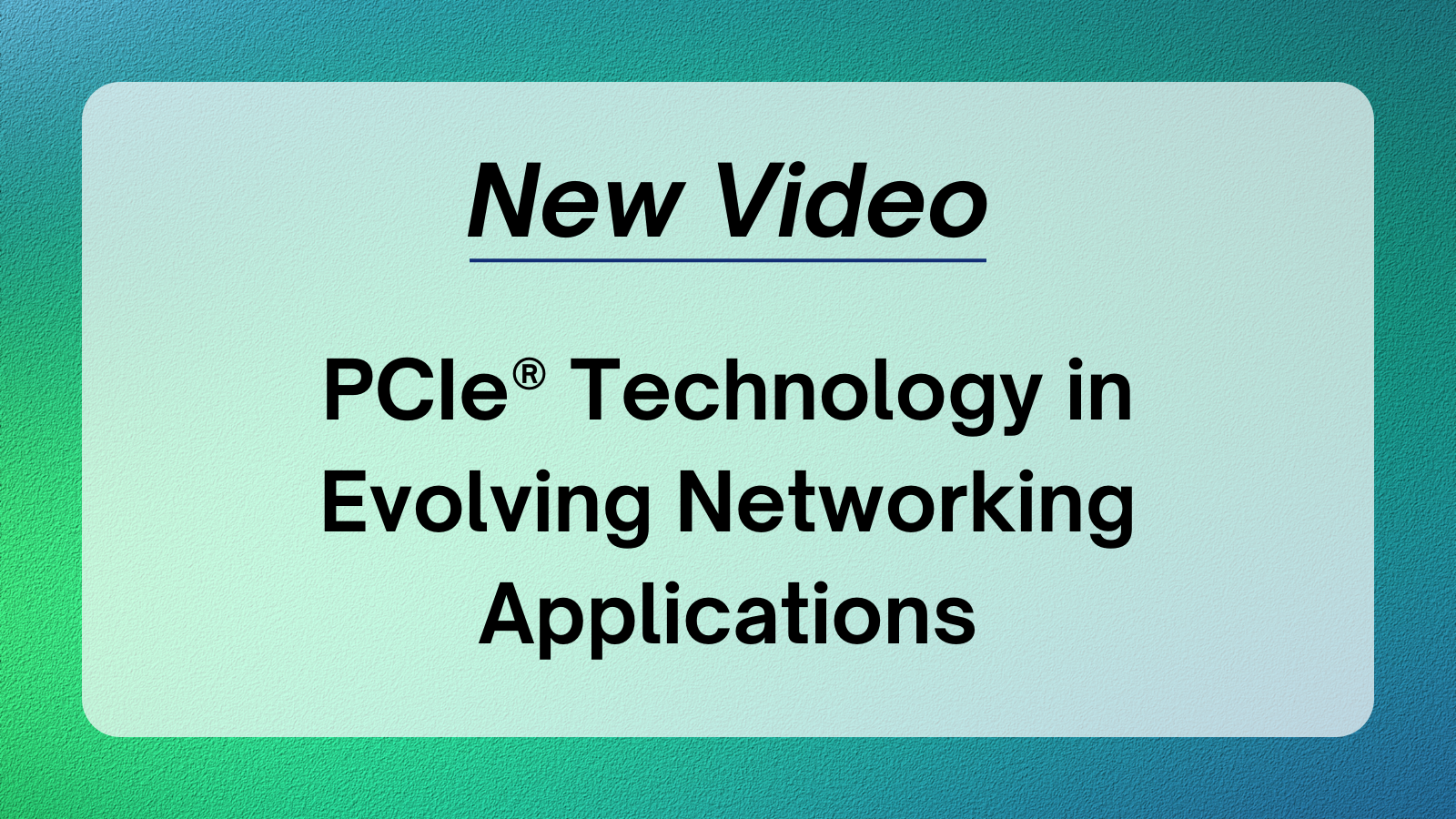New Video – PCIe® Technology in Evolving Networking Applications

Networking devices provide an essential role in facilitating communication between computers and internet networks. The networking market continues to require smoother data transmission, and many challenges are unique to the networking market, like channel loss, loss-channel compensation on the transmission line, and the signal quality of differential PAM4 signals on the endpoint. PCI Express® (PCIe®) technology addresses these common networking challenges by providing rapid transmission speeds, higher data rates and improved transmission line signal quality.
How PCIe Architecture Works Alongside Ethernet
PCIe technology and Ethernet work in tandem to provide faster speeds and create quicker networking capabilities. The current IEEE Standard for Ethernet networking specification is IEEE802.3cu and delivers a 112GBaud = 224Gb/s transmission line speed. Many of the Network Interface Cards (NICs) on server platforms offer high-speed Ethernet capability using PCIe interfaces within the system and 100G/400G/800G High-Speed Ethernet for networking in servers.
PCIe Technology Increasing Bandwidth for Networking
Networking applications are quickly developing due to the demand for greater data transfer speeds, and the server, cloud and data center markets continue to evolve to meet these demands.
Networking applications directly benefit from the new generations of PCIe specifications released every three years, with the maximum data rate doubling alongside each specification release. There is significant value in the PCIe 5.0 specification (32 GT/s data rate), the PCIe 6.0 specification (64 GT/s data rate) and great potential with the PCIe 7.0 specification (128GT/s data rate) targeted for release in 2025.
Additionally, PCIe 6.0 technology introduced PAM4 signaling to improve the transmission line signal quality to fulfill I/O data transfer requests. Increased PCIe technology speed and new features provide new networking opportunities for applications like quantum computing, driverless cars and AI/ML.
The Future of PCIe Technology in Networking Edge
According to the “PCI Express Market Vertical Opportunity” report from ABI Research, the total addressable market (TAM) for PCIe technology in the network edge will grow from US $32.9 million to US $605.7 million by 2030, at a compound annual growth rate (CAGR) of 38%. This includes carrier deployed, hyperscale, neutral-host and enterprise on-premises servers. The rapid growth can be attributed to the proliferation of performance-sensitive applications/use cases such as High-Performance Computing (HPC). HPC uses increasingly deployed heterogeneous resources at the edge and the nearly ubiquitous deployment of PCIe technology for intra-server connectivity. As PCIe technology evolves, we expect additional adoption in the networking industry.

Watch the Video to Learn More
Watch my recent PCIe Technology in Networking video on the PCI-SIG YouTube Channel to learn more about how PCIe architecture is utilized in networking applications. To continue reading about the future of PCIe market opportunities, become a PCI-SIG member to access the full ABI Research Report.
